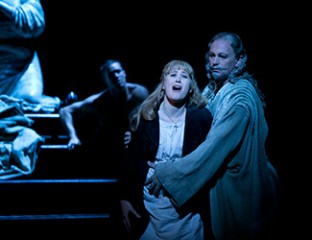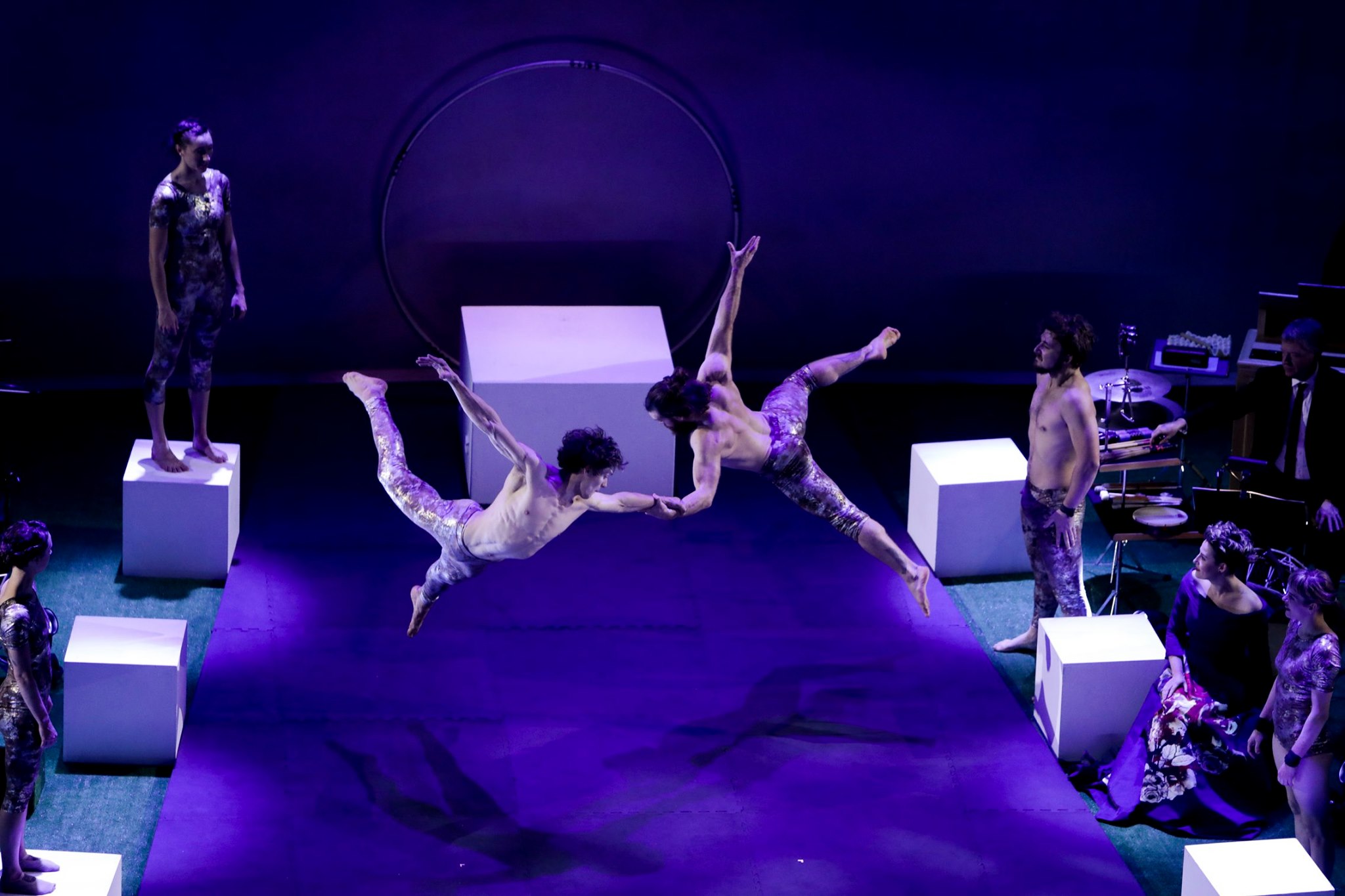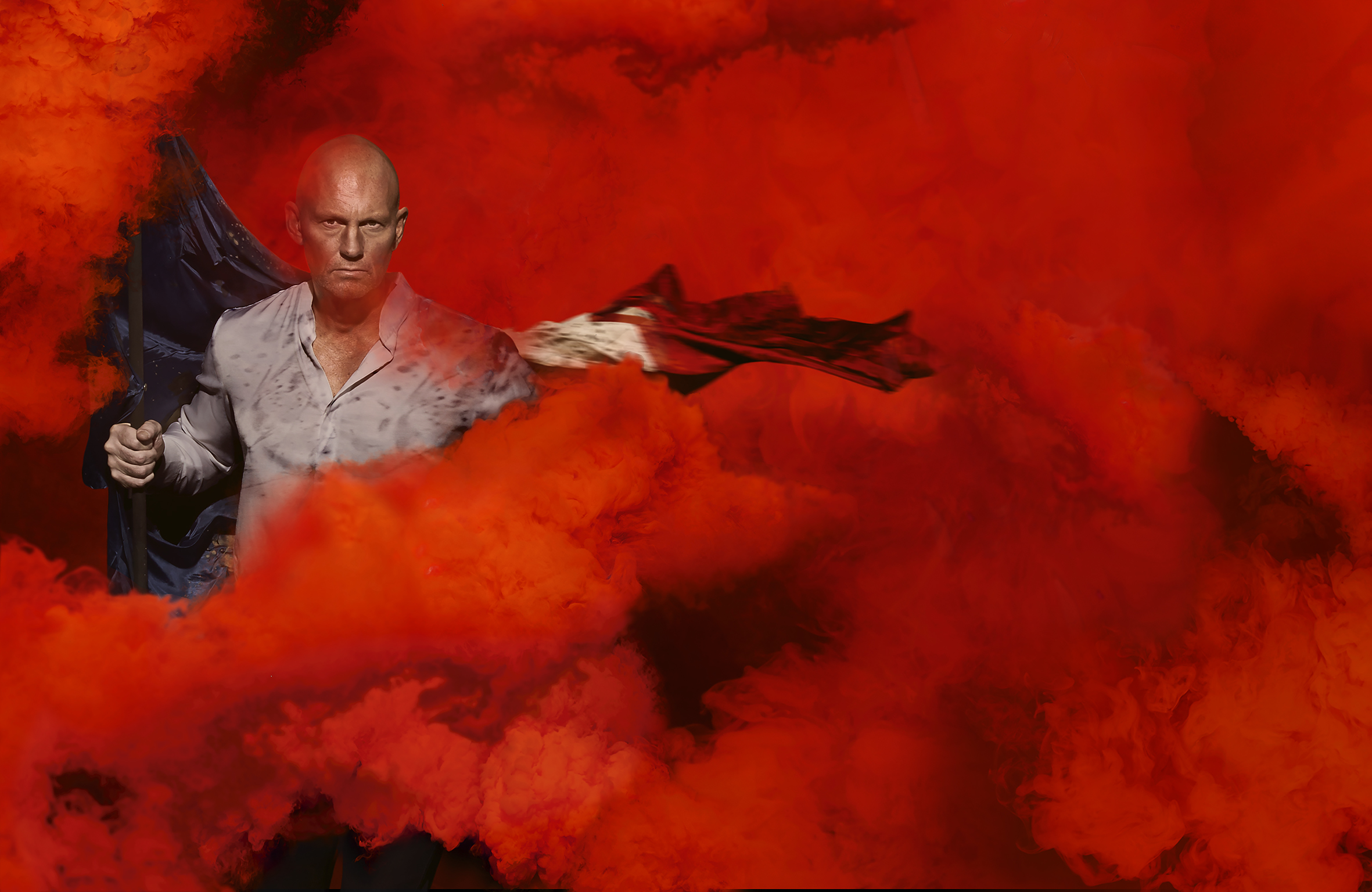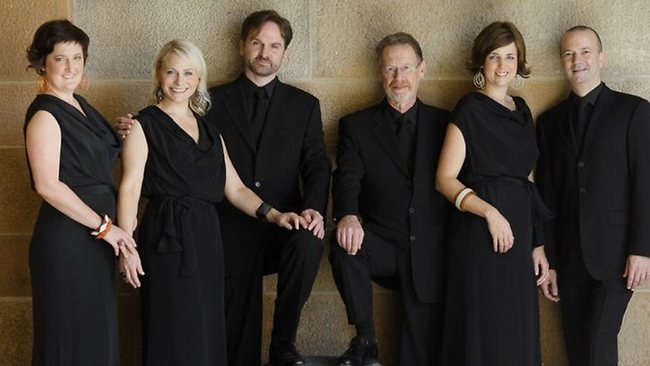Review: Gounod’s Faust/ Opera Australia

‘A feeble French travesty of a German literary monument.’ Such was Wagner’s view, in 1867, of Charles-François Gounod’s opera Faust which premiered in Paris in 1859. No matter that Faust was one of the most successful operas of its time, being performed at the Royal Opera, Covent Garden, every season from 1863 to 1911 and translated into over two dozen languages. The ‘German literary monument’ was the first part of Goethe’s dramatic poem of the same name, upon which is based the play Faust et Marguerite by Michel Carré, who along with Jules Barbier, wrote the libretto for Gounod’s masterpiece.
Much can be said about the substance of the opera and its themes of the sacred and the profane reflecting Gounod’s own struggle between his yearning for life as a priest and the temptation of more visceral pleasures.
Our focus though, must be on the production presented by Opera Australia and originally directed by Sir David McVicar at Covent Garden in 2004, which received its Sydney premiere in the Joan Sutherland Theatre of the Sydney Opera House last week.
In the hands of revival director Bruno Ravella and conductor Guillaume Tourniaire, the production earned an overwhelming stamp of approval from Sydneysiders with a standing ovation the likes of which I have not witnessed on an opening night in two decades of attending opera in Sydney.
McVicar set his production in Paris during the decaying years of the Second Empire in the latter half of the nineteenth century. Charles Edwards’ set design evokes the dichotomy between the celestial and the infernal with red-lit theatre boxes on one side of the stage, presided over by the organ of Paris’ Church of Saint-Séverin opposite. There is a darkly thrilling recreation of the Cabaret L’Enfer a Satanically themed nightclub in Montmartre during La Belle Époque. Costume Designer Brigitte Reiffenstuel has Marguerite (Nicole Car) dressed like Édouard Manet’s barmaid at the Folies-Bergère, (1881-82), and Martha’s (Dominica Matthews) gown recalls the woman in Renoir’s painting La Loge (The Theatre Box) (1874).
Having set the scene, it has to be said that the casting is superb with strong performances from soloists and chorus. As the trembling drug addict Faust, Michael Fabiano proves himself with a voice of awesome power and quality, moving easily from the crumbling disillusionment of age to the fresh hope of youth; vulnerable to seduction by both evil and beauty, by man and by woman.
Nicole Car as Marguerite combines both coloratura and a firm spinto sound, continuing to mature at an astonishing rate both vocally and dramatically, delivering a shimmering resplendence in a commanding portrayal of this very demanding role.
Teddy Tahu Rhodes completes the trio of principals as the menacing puppet-master, Méphistophélès, mastering yet another role of unparalleled evil with fleeting moments of perhaps unintended levity and being seen as he has never been seen before. No, not even as the scantily leather-clad Don Giovanni!
Giorgio Caoduro turned in a fine and sensitive performance as the noble Valentin; Opera Australia Young Artist Anna Dowsley acquitted herself admirably as the vulnerable, love-lorn Siébel; Dominica Matthews added a touch of satire as the fussy Marthe and Richard Anderson played his cameo as Wagner with aplomb.
The orchestra and chorus were outstanding, spinning sounds that created grandeur, foreboding, hedonism and great delicacy. The chorus’ barely- there entry after the death of Valentin was masterful and their sounds from the gallery in the final act were transcendental.
The sequence of scenes in Act 4 was modified with good effect, enabling a suitably dramatic start to the second half of the performance. Embedded in the fifth act is the diabolical Walpurgis Night ballet, not often performed in its entirety but which Sydney audiences were privileged to see. The ballet depicts another step in the relentless disintegration of Faust’s persona. In it, Méphistophélès presents the poet with some of the most beautiful temptresses through history. Together, they watch the sylphs, clad in filmy white, who may well have waltzed around the poet of Chopin’s Les Sylphides, or danced as the ghostly Wilis in Adam’s Giselle. Before long, the dance deteriorates into a grotesque stomp of violence and depravity, mirroring Marguerite’s pregnant hell.
Gounod’s Faust contains some of opera’s most famous musical moments – the dazzling coloratura of the Jewel Song, the testosterone fuelled Soldiers’ Chorus, the irrepressible waltz, the ballet music and the powerful trio from the final scenes so evocative of victory but perversely heading towards tragedy.
Although Sir David McVicar worked with a different Set Designer (Robert Jones) for last year’s production of Don Giovanni there are many similarities in themes and dramatisations. Coincidentally, two of the principals from that production (Nicole Car and Teddy Tahu Rhodes) reprise their partnership in this successful team.
This presentation of Faust has been so eagerly anticipated in Sydney that it was almost sold out even before opening night. To accommodate the demand, Opera Australia have added an extra performance.
With their standing ovation and demand for tickets, Sydney audiences have vindicated themselves demonstrating that there is support in this city for skilled performances of accurate, intelligent and imaginative productions of rarely seen great operas. Sydney is all the richer for being able to experience this vision of Faust.
I am not in the habit of inciting readers to violence but if you can’t acquire a ticket, ambush someone who has. To resort to a cliché -this production is not to be missed.
Shamistha de Soysa for SoundsLikeSydney©
Gounod’s Faust is at the Joan Sutherland Opera Theatre at the Sydney Opera House on selected evenings until March 13th 2015, with an additional performance on Monday March 9.






